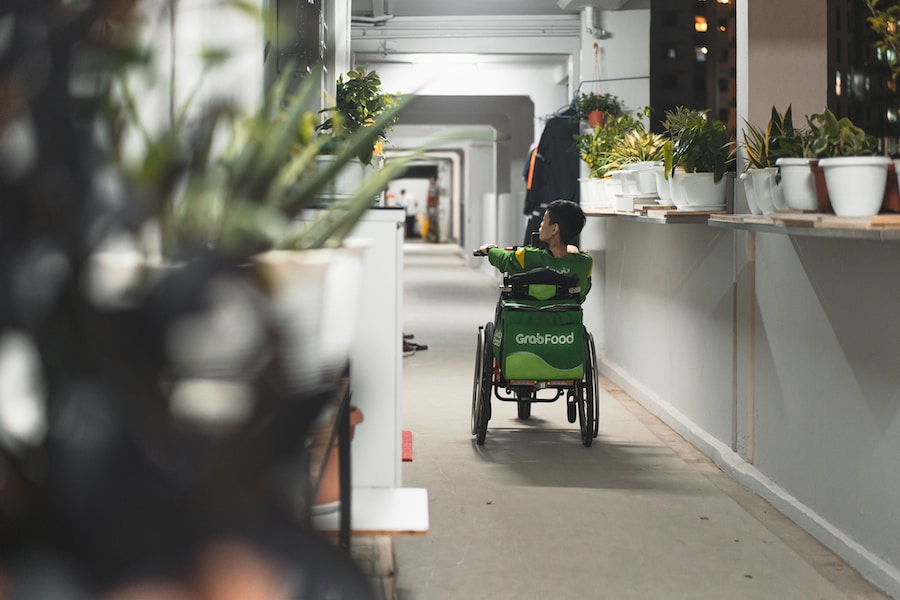Accessibility refers to the design and implementation of environments, products, services, and technologies that can be used by people with disabilities. Disability rights, on the other hand, are the legal and social rights that protect individuals with disabilities from discrimination and ensure their equal participation in society. Both accessibility and disability rights are crucial for creating an inclusive and equitable society.
The importance of accessibility and disability rights cannot be overstated. People with disabilities face numerous barriers in their daily lives, including physical, communication, and attitudinal barriers. These barriers prevent them from fully participating in society, accessing education, employment, healthcare, transportation, and other essential services. By promoting accessibility and disability rights, we can break down these barriers and create a more inclusive society where everyone has equal opportunities.
The Impact of Inaccessibility on People with Disabilities
Inaccessibility can have a profound impact on people with disabilities. In various settings such as public buildings, transportation systems, educational institutions, and workplaces, individuals with disabilities often encounter barriers that prevent them from fully participating. For example, a person who uses a wheelchair may be unable to enter a building due to the lack of ramps or elevators. Similarly, a person who is blind may struggle to navigate a website that is not designed with accessibility features.
These barriers not only limit the independence and autonomy of individuals with disabilities but also contribute to social exclusion and isolation. When people with disabilities are unable to access essential services or participate in community activities, they are denied equal opportunities for personal growth, education, employment, and social interaction. This can have a significant impact on their overall well-being and quality of life.
The Legal Framework for Disability Rights and Accessibility
To address the challenges faced by people with disabilities, many countries have enacted laws and regulations that protect their rights and promote accessibility. These laws vary from country to country but generally aim to ensure equal opportunities and non-discrimination for individuals with disabilities. Examples of disability rights laws include the Americans with Disabilities Act (ADA) in the United States, the Disability Discrimination Act (DDA) in the United Kingdom, and the Accessibility for Ontarians with Disabilities Act (AODA) in Canada.
Government plays a crucial role in promoting accessibility and disability rights. It is responsible for enforcing these laws, creating regulations and standards, and providing resources and support to individuals and organizations. Governments also have a role in raising awareness about disability rights and promoting inclusive practices in various sectors, such as education, employment, transportation, and healthcare.
The Benefits of Accessibility for Everyone
Accessibility not only benefits people with disabilities but also has positive impacts on society as a whole. When environments, products, services, and technologies are designed with accessibility in mind, they become more usable and inclusive for everyone. For example, curb cuts that were initially designed to assist wheelchair users are now used by parents with strollers, delivery workers with carts, and cyclists.
Universal design is an approach that aims to create products and environments that are accessible to people of all abilities. It involves designing for the widest possible range of users from the outset, rather than retrofitting or making accommodations later on. Universal design principles include flexibility, simplicity, perceptible information, tolerance for error, low physical effort, and size and space for approach and use.
The Economic Case for Accessibility
In addition to the social benefits, there is also a strong economic case for accessibility. Inaccessible environments and services can result in lost opportunities and productivity for individuals with disabilities. For example, if a person with a visual impairment cannot access a website or use a computer due to lack of accessibility features, they may be unable to apply for jobs or access online education.
On the other hand, when environments are accessible and inclusive, individuals with disabilities can fully participate in the workforce, contribute their skills and talents, and generate economic value. Accessible workplaces also benefit employers by increasing diversity, improving employee morale and satisfaction, and attracting a wider pool of talent.
The Importance of Inclusive Design and Universal Accessibility
Inclusive design is an approach that aims to create products, services, and environments that are accessible and usable by people of all abilities. It involves considering the diverse needs and preferences of users from the outset and designing with inclusivity in mind. Inclusive design goes beyond compliance with accessibility standards and regulations and focuses on creating experiences that are intuitive, seamless, and enjoyable for everyone.
Universal accessibility is a key principle of inclusive design. It means designing environments, products, services, and technologies that can be used by people of all abilities without the need for adaptation or specialized design. Universal accessibility ensures that everyone can access and use the same spaces, services, and opportunities on an equal basis.
Overcoming Barriers to Accessibility: Challenges and Solutions
Despite the legal framework and growing awareness about accessibility, there are still many barriers that prevent full inclusion for people with disabilities. Some common barriers include physical barriers such as inaccessible buildings or transportation systems, communication barriers such as lack of sign language interpretation or captioning, and attitudinal barriers such as stereotypes or discrimination.
To overcome these barriers, it is essential to adopt a multi-faceted approach that involves collaboration between government, businesses, organizations, and individuals. This includes raising awareness about accessibility issues, providing training and education on inclusive practices, implementing accessibility standards and guidelines, conducting accessibility audits and assessments, and involving people with disabilities in the design and decision-making processes.
The Role of Technology in Advancing Accessibility
Technology plays a crucial role in advancing accessibility. Assistive technology refers to devices, software, or equipment that assist individuals with disabilities in performing tasks or accessing information. Examples of assistive technology include screen readers for people with visual impairments, hearing aids for people with hearing loss, and alternative input devices for people with mobility impairments.
In addition to assistive technology, mainstream technologies can also contribute to accessibility. For example, smartphones and tablets have built-in accessibility features such as screen magnification, voice recognition, and haptic feedback. Similarly, websites and applications can be designed with accessibility features such as alternative text for images, keyboard navigation, and closed captioning.
The Importance of Advocacy and Activism for Disability Rights
Advocacy and activism play a crucial role in promoting disability rights and advancing accessibility. Advocacy involves speaking up for the rights and needs of individuals with disabilities, raising awareness about disability issues, and influencing policies and practices. Activism goes a step further by taking direct action to bring about social change, such as organizing protests or campaigns.
Successful advocacy and activism efforts have led to significant advancements in disability rights. For example, the disability rights movement in the United States played a key role in the passage of the ADA, which prohibits discrimination against individuals with disabilities in various areas of life. Similarly, disability rights activists around the world have fought for accessible transportation systems, inclusive education, and equal employment opportunities.
The Need for Cultural and Attitudinal Shifts towards Disability
In addition to legal protections and accessibility measures, there is a need for cultural and attitudinal shifts towards disability. Negative attitudes towards disability can perpetuate stereotypes, discrimination, and exclusion. It is essential to challenge these attitudes and promote positive perceptions of disability.
Promoting positive attitudes towards disability involves raising awareness about the capabilities and contributions of individuals with disabilities, challenging stereotypes and misconceptions, and promoting inclusive language and representation. It also involves creating opportunities for individuals with disabilities to share their stories, talents, and achievements.
Embracing Accessibility as a Human Right and Social Responsibility
Accessibility is not just a matter of convenience or compliance; it is a fundamental human right. Every individual, regardless of their abilities, has the right to access and participate in society on an equal basis. It is the responsibility of individuals, organizations, and society as a whole to ensure that this right is upheld.
By embracing accessibility and disability rights, we can create a more inclusive and equitable society where everyone has equal opportunities and can fully participate. This requires a collective effort that involves governments, businesses, organizations, and individuals working together to remove barriers, promote inclusive practices, and advocate for the rights of individuals with disabilities. Only by doing so can we truly create a society that values diversity, inclusion, and equality for all.
Find out how Torongo Therapyplus can help you with your needs. Get in touch with us at smile@torongo.life, or call us on 02 8809 9965.































